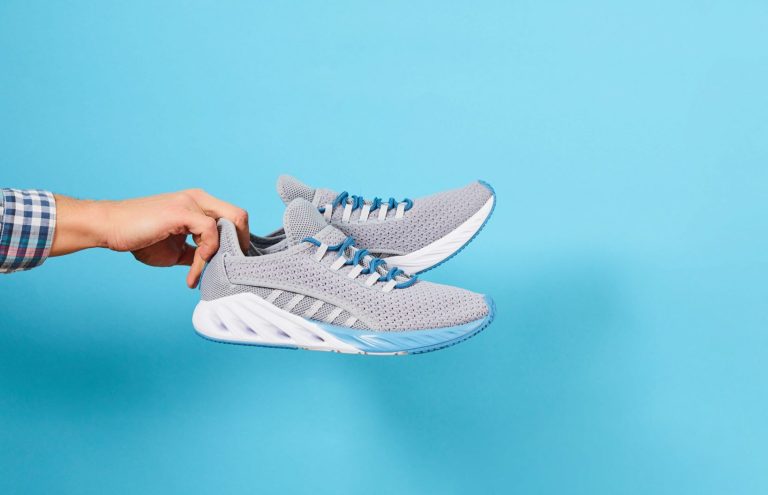Patients who are prescribed 3D orthoses may only sometimes know which shoes to wear with these supports. What role do shoes play in 3D orthoses? How do you choose the right shoes to optimize the benefits of the inserts? Is it necessary to buy specialized or expensive models? We offer you answers to all these questions.
The significance of shoes for 3D orthoses
The shoes that patients wear play a crucial role in ensuring optimal treatment. Shoes for 3D orthoses are not necessarily orthopedic shoes in the true sense of the word but models that can adapt to the shape and volume of the feet, taking into account the device that accompanies them on a daily basis. They should not damage the orthoses or hinder their action but rather help them to perform their corrective functions properly. For example, running shoes, hiking boots, close-toed work shoes, and shoes with a small heel and a good fit around the ankle.
It is important to explain to the patient what criteria to consider when choosing their shoes to be worn with foot orthoses.
The features of a shoe adapted to 3D foot orthoses
For starters, you should choose shoes that guarantee good stability for the foot and the ankle, with firm heel support so that the heel is properly secured while walking, thus maintaining its optimal position on the foot orthoses.
Secondly, we recommend choosing shoes with removable insoles. The patient will be able to remove them and replace them with 3D orthoses as needed. The device should not move in the shoe when the body is in motion. In this regard, it is also necessary to opt for models that are sturdy enough (not too flexible), and that will not bend too easily, especially in the center of the foot, to ensure good control.
Regarding the shape of the shoe, it is better to go for models with laces or velcro in order to be able to insert and remove the orthoses easily, but also to close the shoe when it is worn without it being too tight.
In general, a shoe for 3D orthoses should be comfortable and provide proper support for the foot. The idea is to help the sole act on the pressure points and avoid possible injuries.
Should you avoid certain types of shoes with 3D orthoses?
Certain types of shoes are not recommended for people who wear 3D orthoses. This is particularly true for high heels, beach sandals, ballet flats, or slipper-type shoes whose structure is very soft and therefore does not provide any support for the foot. These shoes not only risk undermining the work of the foot orthoses, but some models will even hinder the device from holding properly.
Are all 3D orthoses-friendly shoes expensive?
Many patients wonder if shoes for 3D orthoses are more expensive. Price is not necessarily the issue, as just because a pair is expensive does not mean it is necessarily a better fit – perhaps it is just better quality. Finally, the most important factor is that the type of shoe meets the criteria mentioned above, i.e. that it is capable of accommodating the custom orthoses and helping to support and correct the foot in an efficient manner. These same characteristics are just as important for people who wear 3D orthoses as for those who use traditional models.
Why it’s important to choose the right shoes for 3D orthoses
The choice of footwear plays a key role in the successful treatment of patients who are prescribed 3D orthoses. The intent is not to make them buy specialized or more expensive shoes but to give them the essentials of a suitable shoe so that they can move on to common models that meet those same requirements.
If you have any questions about Talaria’s 3D orthoses, please do not hesitate to contact our team for more information.
